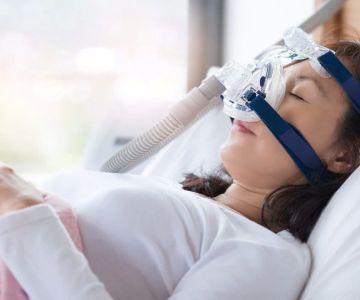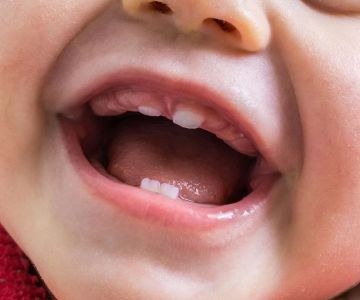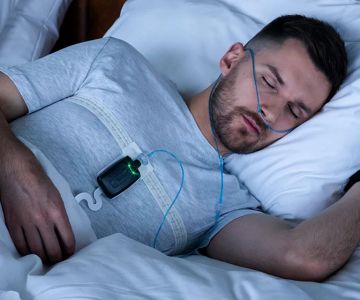Oral Appliances for Sleep Apnea: A Viable Alternative to CPAP
When it comes to treating sleep apnea, there are various options available. One of the common debates among healthcare professionals and patients is the choice between oral appliances and CPAP (Continuous Positive Airway Pressure) machines. In this article, we'll delve deep into the benefits that oral appliances offer over CPAP for those struggling with sleep apnea.
Understanding Sleep Apnea and Its Treatments
Sleep apnea is a serious disorder where the upper airway becomes partially or completely blocked during sleep, causing disrupted breathing and poor sleep quality. The traditional treatment, CPAP, involves a mask and a machine that delivers pressurized air to keep the airway open. However, many patients find CPAP uncomfortable, bulky, and difficult to adhere to on a long-term basis.
Reduced Side Effects with Oral Appliances
Oral appliances have the advantage of causing fewer side effects compared to CPAP. With CPAP, common complaints include discomfort from the mask, skin irritation, and noise. Oral appliances, on the other hand, may cause short-term issues like increased salivation, jaw pain, or gum irritation during the initial adjustment period. However, these usually subside as the body gets accustomed to the device. Long-term side effects with a properly fitted oral appliance are rare.
Portability and Convenience
One of the significant benefits of oral appliances is their portability. They are easy to carry when traveling, allowing for consistent treatment regardless of location. CPAP machines, on the other hand, can be cumbersome to pack and may not be suitable for all travel situations.
Improved Comfort and Discretion
Oral appliances are more discreet and less obtrusive than CPAP masks. They fit inside the mouth and don't draw as much attention, making them a more comfortable option for many patients, especially those who are self-conscious about wearing a visible device to bed.
Enhanced Sleep Quality
Studies have shown that for some individuals, oral appliances can lead to deeper sleep with fewer disruptions. They can reduce or even eliminate snoring, providing a quieter sleeping environment for both the patient and their partner.
Who Are Oral Appliances Best Suited For?
Oral appliances work best for people with mild to moderate sleep apnea who have difficulty using CPAP. They can also be used in combination with CPAP for added benefits. However, it's essential to have a proper sleep study and consultation with a healthcare provider to determine the most suitable treatment option based on individual circumstances.
The Different Types of Oral Appliances
There are two main types of oral appliances used to treat sleep apnea: mandibular advancement devices (MADs) and tongue-stabilizing devices (TSDs). MADs pull the lower jaw forward, creating more space in the airway, while TSDs hold the tongue in place to prevent airway blockage. Custom-made oral appliances tend to offer the best results, but over-the-counter options can also provide some relief.
The Procedure for Obtaining an Oral Appliance
To get an oral appliance, a sleep study is first required to diagnose sleep apnea. If an oral appliance is deemed appropriate, a referral to a dentist is necessary. The dentist will take impressions of the teeth, send them to a manufacturer for a custom fit, and ensure the appliance is comfortable and effective through follow-up visits and possible adjustments.
Long-Term Considerations
Regular visits to the dentist are crucial to monitor for any changes in dental health, such as bite alterations, teeth movement, or TMJ issues. With proper care and maintenance, oral appliances can last for an extended period and continue to provide effective treatment for sleep apnea.
Conclusion
In conclusion, oral appliances offer several benefits over CPAP for sleep apnea treatment. They provide a more comfortable, portable, and discreet option that can improve sleep quality and reduce snoring. However, the choice between oral appliances and CPAP should be based on individual needs, the severity of sleep apnea, and consultation with a healthcare provider. Both treatments have their place in the management of sleep apnea, and the goal is to find the option that works best for each patient to ensure a good night's sleep and overall health improvement.







 Westgate Dental Arts
Westgate Dental Arts Coventry Family Dental
Coventry Family Dental Familia Dental
Familia Dental Dr. Daniel S. Fife, DDS
Dr. Daniel S. Fife, DDS Dentistry At Suburban Square: Michael I. Wollock, DMD
Dentistry At Suburban Square: Michael I. Wollock, DMD Comfort Care Dental
Comfort Care Dental The Importance of Oral Health Education During Pregnancy for a Healthy Pregnancy
The Importance of Oral Health Education During Pregnancy for a Healthy Pregnancy Why Skipping Dental Checkups Can Lead to Bigger Oral Health Problems
Why Skipping Dental Checkups Can Lead to Bigger Oral Health Problems Advantages of Porcelain Dental Restorations
Advantages of Porcelain Dental Restorations Best Tips for Brushing Your Teeth Properly for Healthy Gums: Essential Techniques for Oral Health
Best Tips for Brushing Your Teeth Properly for Healthy Gums: Essential Techniques for Oral Health How Can Diabetes Cause Tooth and Gum Problems? Preventing and Managing Oral Health Issues
How Can Diabetes Cause Tooth and Gum Problems? Preventing and Managing Oral Health Issues Healthy Habits for Promoting Good Oral Health and Hygiene: Tips for a Healthy Smile
Healthy Habits for Promoting Good Oral Health and Hygiene: Tips for a Healthy Smile